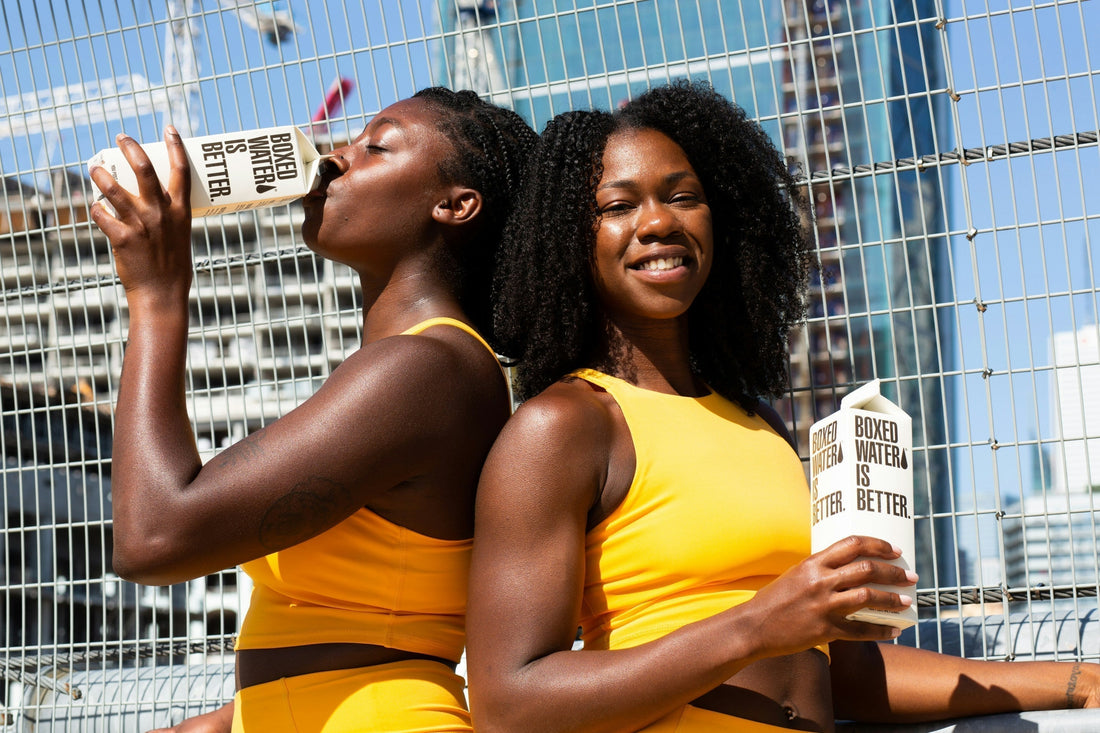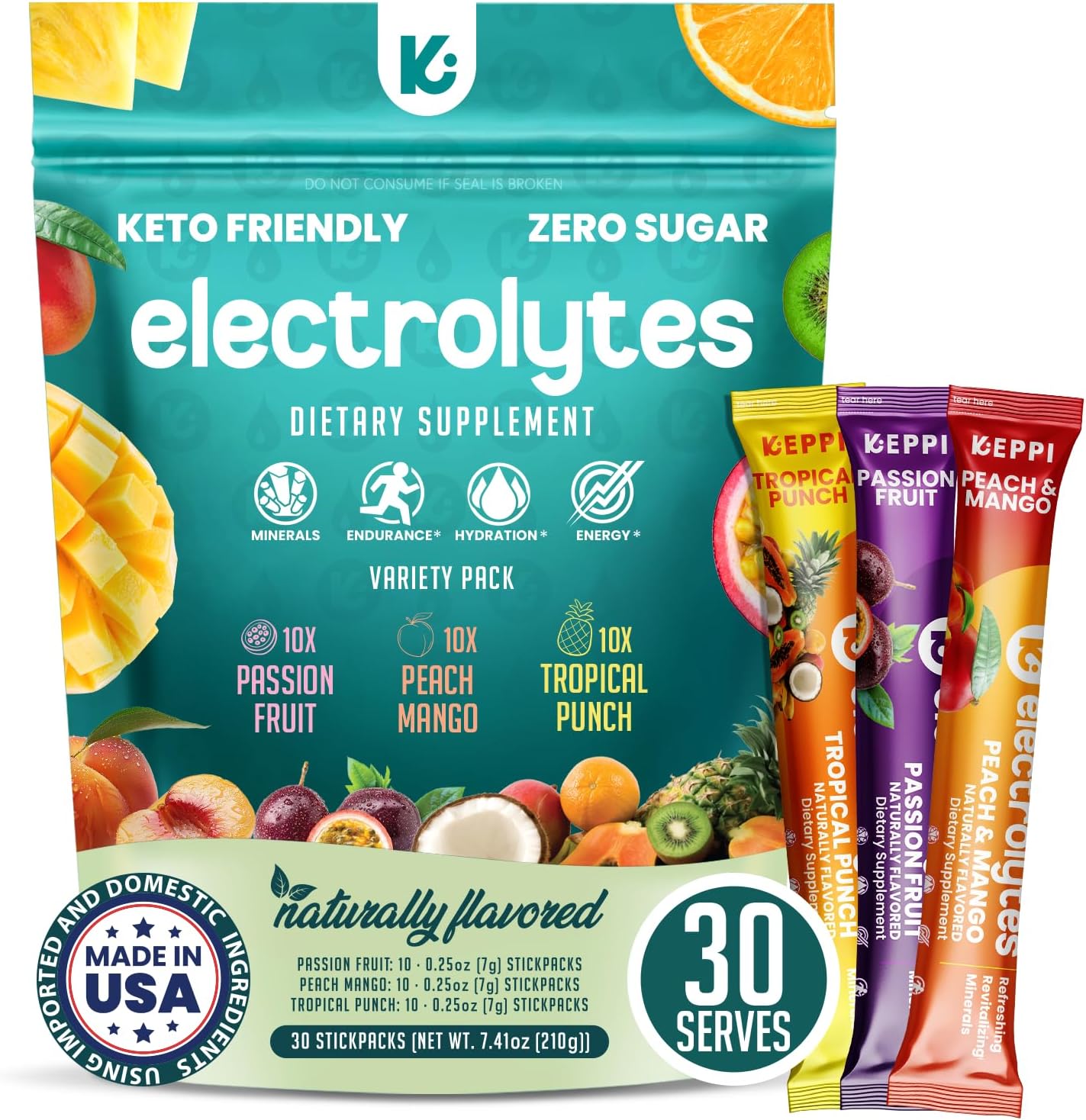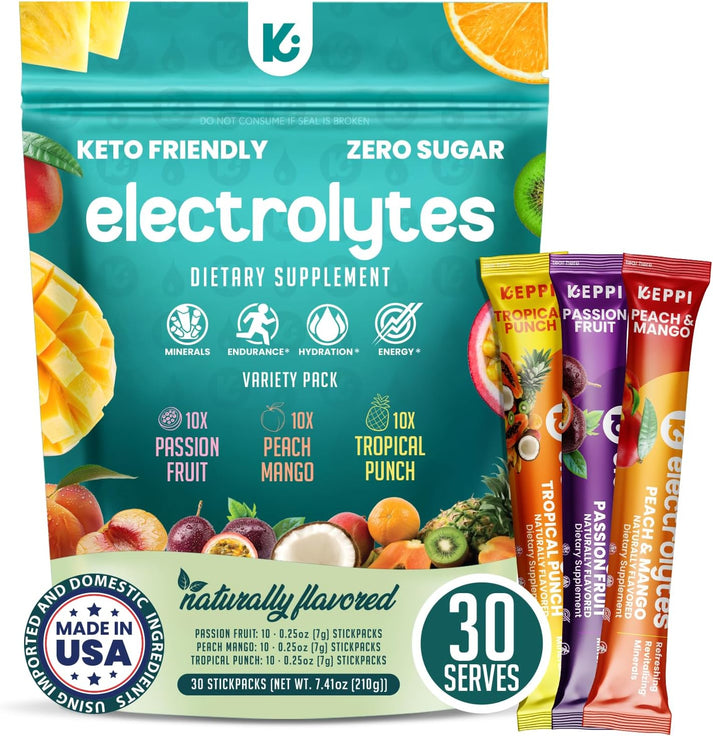
Don’t Let Hydration Gaps Slow You Down: Fast Drinks, Electrolytes & Recovery Tips
Share
Fast Hydration Drinks: Best Sugar-Free Electrolyte Powder, Packets & Recovery Tips
How to pick a clean electrolyte powder / electrolyte drink mix with the right electrolyte ratio for rapid rehydration—without excess sugar or fillers.
Did you know a hard workout, long flight, or sweltering commute can drain up to ~2 liters of fluid in an hour depending on heat and sweat rate? That rapid loss strips sodium, potassium, and magnesium—inviting cramps, fading focus, and performance drops (ACSM, 2007; Cheuvront & Kenefick, 2014). Plain water alone can dilute remaining salts and may not restore fluid balance fast enough under stress (WHO, 2005; Maughan et al., 2016). Convenient hydration drinks for adults and sugar-free electrolytes (powders or hydration packets) help close this gap so you bounce back quickly—the goal whether you want the best drink to rehydrate after training or a clean electrolyte drink mix for travel.
Below, you’ll get a science-backed playbook for the fastest way to hydrate: what to look for on labels, which minerals matter, and simple dosing tactics that fit real life (Riebl & Davy, 2014; Cox et al., 2019).
What You'll Learn about the Benefits of Using Electrolyte Powders and Hydrating Drinks
- Key minerals for fluid balance—ideal ranges for the best electrolytes for muscle cramps (sodium, potassium, magnesium, calcium) (IOM, 2004; Weaver et al., 2013).
- How dehydration cuts focus, stamina and performance—and its link to cramping (Riebl & Davy, 2014; Cheuvront & Kenefick, 2014).
- Why electrolyte powders solve on-the-go challenges better than many bottled drinks (ACSM, 2007; Maughan et al., 2016).
- How to choose a clean electrolyte powder for your needs (no dyes, minimal sugars, transparent testing) (ACSM, 2007).
- Mixing tactics for workouts, travel, recovery, and hangover support (Casa et al., 2000; Cox et al., 2010).
TL;DR: Quick Benefits Snapshot
Electrolyte powders are fast hydration drinks that restore sodium, potassium, magnesium, and calcium to support muscle function, focus, and recovery—without the sugar spikes common in sports drinks (ACSM, 2007; Maughan et al., 2016). For everyday convenience, travel-ready hydration packets make it easy to stay on pace.
Learn more about Keppi’s Exotic Electrolyte Stick PackEducation Topics: Best Hydration Strategies and Electrolyte Use
- Mineral balance—why the right sodium:potassium:magnesium:calcium mix matters (IOM, 2004; Weaver et al., 2013).
- Rapid absorption—forms and particle size that speed uptake (Schuette et al., 1991; Walker et al., 2003).
- Custom dosing—personalize by sweat rate, climate, and session length (Casa et al., 2000; Cox et al., 2019).
- Recovery support—electrolytes + carbs or aminos for refill & repair (Cox et al., 2010).
- Cellular performance—electrolytes, nerve signaling, and thermoregulation (Jeukendrup, 2010; Volpe, 2013).
Mineral Balance and Its Role in Hydration
You need sodium, potassium, magnesium, and calcium in effective ratios to move water, fire muscles, and steady nerves (IOM, 2004; Jeukendrup, 2010). Plain water can dilute plasma sodium during prolonged sweating, while sugar-free electrolyte powder targets the minerals directly (ACSM, 2007; WHO, 2005).
- Sodium maintains plasma volume and supports endurance (Jentjens et al., 2003; ACSM, 2007).
- Potassium balances intracellular fluid and heartbeat (Weaver et al., 2013).
- Magnesium & calcium coordinate contraction–relaxation cycles (Volpe, 2013; Allen & Westerblad, 2021).

Rapid Absorption Technology for Fast Hydration
Ultra-fine powders paired with citrate or chloride salts dissolve quickly and support faster gastric emptying and uptake (Schuette et al., 1991; Walker et al., 2003). Small glucose amounts can accelerate sodium-glucose co-transport, but many adults prefer low- or no-sugar options for daily use (WHO, 2005; Brown, 2020).
- Finer particles = more surface area for uptake (Schuette et al., 1991).
- Citrate forms are generally gentler on digestion (Walker et al., 2003).
- Keeping sugars modest avoids spikes and GI slowdown (Brown, 2020).
“Electrolyte powders are practical for rehydration and cramp prevention in hot or high-sweat conditions when dosing and timing are personalized.”
Customizable Dosing for Your Hydration Needs
Humidity, workout length, intensity, and sweat sodium concentration drive your needs; personalization beats one-size-fits-all (Casa et al., 2000; Cox et al., 2019). Start with one stick in 12–16 oz (350–475 mL), then adjust by thirst, urine color (pale straw), body-mass changes, and cramp history (Shirreffs, 2009).
- Increase sodium on hot/humid days or for heavy sweaters (ACSM, 2007).
- Use half-strength on light days to avoid excess (Shirreffs, 2009).
- Pair sodium-forward blends with potassium-rich foods for balance (Weaver et al., 2013).
Muscle Recovery Support
Electrolytes support cellular energy and muscle firing; combining them with carbs or essential amino acids post-training supports glycogen resynthesis and repair (Cox et al., 2010; Volpe, 2013).
- Supports glycogen restoration with carbs as needed (Cox et al., 2010).
- Can ease cramp-prone scenarios linked to heavy sweat loss (ACSM, 2007).
- Complements protein for recovery phases (Jeukendrup, 2010).
Cellular Function & Performance Insights
Electrolytes maintain electrical gradients for nerve conduction, muscle contraction, and temperature regulation—key for cognition and reaction time under heat or load (Jeukendrup, 2010; Volpe, 2013; Allen & Westerblad, 2021).
Dial In Your Hydration Strategy With Portable Electrolytes
Keppi Electrolyte Powder blends sodium, potassium, magnesium, and calcium into a zero-sugar formula that mixes in seconds—ideal as a best hydration powder for training, travel, or long workdays.
Implementation Guide: Packet-to-Performance Steps
- Estimate sweat loss: weigh before/after training to set a replacement target (Casa et al., 2000).
- Start with one stick in 12–16 oz cold water; shake 10 seconds (ACSM, 2007).
- Add a second packet when heat, humidity, or session duration climbs (Shirreffs, 2009).
- Review weekly markers—energy, cramp frequency, bathroom trips—and fine-tune (Cox et al., 2019).
Exotic Electrolyte Variety On-The-Go Stick Pack

Exotic Electrolyte Variety On-The-Go Stick Pack
Passion Fruit, Peach Mango, and Tropical Punch—crisp flavors in sugar-free electrolyte packets. Each serving supplies sodium, potassium, magnesium, and calcium for rapid rehydration and everyday consistency.
User Benefits You Can Taste and Feel
- Three natural flavors encourage daily use—the real driver of results (Shirreffs, 2009).
- Zero sugar supports steady energy between meals (Brown, 2020).
- Pocket-friendly sticks for training, commuting, or flights.
Safety & Smart Use
Most healthy adults tolerate electrolyte drinks well; issues usually stem from over-doing sodium or using sweeteners that upset the gut. Track total daily intake and speak with your clinician if you manage kidney disease or hypertension (CDC, 2021; NKF, 2021). Watch for GI discomfort with high magnesium or sugar alcohols and adjust accordingly (IOM, 1997; Aziz et al., 2022).
Conclusion
The fastest way to rehydrate isn’t just more water—it’s the right electrolyte ratio delivered with clean ingredients. A best electrolyte powder supports hydration, steadies nerves, and helps recovery—without excess sugar or dyes (ACSM, 2007; Maughan et al., 2016). Keep portable sticks on hand and personalize your plan to conditions and goals.
Ready to Upgrade Your Hydration?
Experience clean, rapid mineral support with Keppi Electrolyte Powder—formulated for flavor, performance, and everyday convenience.
Learn MoreReferences
- ACSM (2007) ‘Exercise and fluid replacement’, Med Sci Sports Exerc, 39(2), 377–390.
- Allen, D.G. & Westerblad, H. (2021) ‘The role of calcium in muscle fatigue’, Physiol Rev, 101(2), 683–728.
- Aziz, S. et al. (2022) ‘Sugar alcohols and gastrointestinal tolerance’, Nutr Rev, 80(7), 1292–1306.
- Casa, D.J. et al. (2000) ‘National Athletic Trainers’ Association position statement: fluid replacement for athletes’, J Athl Train, 35(2), 212–224.
- Cheuvront, S.N. & Kenefick, R.W. (2014) ‘Dehydration: physiology, assessment, and performance effects’, Sports Med, 44(Suppl 1), 31–38.
- Cox, G.R. et al. (2010) ‘Carbohydrate intake during exercise’, J Appl Physiol, 108(1), 186–195.
- Cox, G.R. et al. (2019) ‘Personalized hydration strategies’, Sports Med, 49(10), 1477–1488.
- CDC (2021) ‘Sodium and cardiovascular disease: guidance for adults’.
- IOM (1997) ‘Tolerable Upper Intake Levels for Magnesium’. National Academies.
- IOM (2004) ‘Dietary Reference Intakes: Water, Potassium, Sodium, Chloride, and Sulfate’. National Academies.
- Jeukendrup, A.E. (2010) ‘Nutrition for endurance sports’, Sports Med, 40(11), 913–925.
- Jentjens, R.L. et al. (2003) ‘Effects of sodium ingestion on endurance performance’, Med Sci Sports Exerc, 35(4), 564–570.
- Maughan, R.J. et al. (2016) ‘A randomized trial of the Beverage Hydration Index’, Am J Clin Nutr, 103(3), 717–723.
- NKF (2021) ‘Managing sodium intake for kidney health’.
- Riebl, S.K. & Davy, B.M. (2014) ‘The hydration equation: water balance and cognitive performance’, Nutrition Reviews, 72(S2), 97–112.
- Schuette, S.A. et al. (1991) ‘Mineral absorption and bioavailability’, J Am Diet Assoc, 91(6), 750–754.
- Shirreffs, S.M. (2009) ‘Markers of hydration status and practical monitoring’, IJSNEM, 19(6), 595–607.
- Volpe, S.L. (2013) ‘Magnesium in health and exercise’, Adv Nutr, 4(3), 378S–383S.
- Walker, A.F. et al. (2003) ‘Bioavailability of magnesium salts’, J Am Coll Nutr, 22(2), 170–176.
- Weaver, C.M. et al. (2013) ‘Potassium and health’, Adv Nutr, 4(3), 368S–377S.
- WHO (2005) The Treatment of Diarrhoea: ORS principles (sodium–glucose co-transport).
